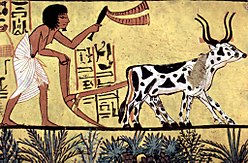
Permaculture

With its system of applied education, research and citizen-led design permaculture has grown a popular web of global networks and developed into a global social movement. The term permaculture was developed and coined by David Holmgren, then a graduate student at the Tasmanian College of Advanced Education's Department of Environmental Design, and Bill Mollison, senior lecturer in Environmental Psychology at University of Tasmania, in 1978. The word permaculture originally referred to 'permanent agriculture', but was expanded to stand also for 'permanent culture', as it was understood that social aspects were integral to a truly sustainable system as inspired by Masanobu Fukuoka’s natural farming philosophy. It has many branches that include, but are not limited to, ecological design, ecological engineering, regenerative design, environmental design, and construction. Permaculture also includes integrated water resources management that develops sustainable architecture, and regenerative and self-maintained habitat and agricultural systems modelled from natural ecosystems. Mollison has said: 'Permaculture is a philosophy of working with, rather than against nature; of protracted and thoughtful observation rather than protracted and thoughtless labor; and of looking at plants and animals in all their functions, rather than treating any area as a single product system.' The 12 principles of permaculture most commonly referred to are first described by David Holmgren in his book Permaculture: Principles and Pathways Beyond Sustainability (2002). They include: Observe and Interact, Catch and Store Energy, Obtain a Yield, Apply Self Regulation and Accept Feedback, Use and Value Renewable Resources and Services, Produce No Waste, Design From Patterns to Details, Integrate Rather Than Segregate, Use Small and Slow Solutions, Use and Value Diversity, Use Edges and Value the Marginal, and Creatively Use and Respond to Change. Several individuals revolutionized the branch of permaculture. In 1929, Joseph Russell Smith added an antecedent term as the subtitle for Tree Crops: A Permanent Agriculture, a book which sums up his long experience experimenting with fruits and nuts as crops for human food and animal feed. Smith saw the world as an inter-related whole and suggested mixed systems of trees and crops underneath. This book inspired many individuals intent on making agriculture more sustainable, such as Toyohiko Kagawa who pioneered forest farming in Japan in the 1930s. In Australian P. A. Yeomans' 1964 book Water for Every Farm, he supports the definition of permanent agriculture, as one that can be sustained indefinitely. Yeomans introduced both an observation-based approach to land use in Australia in the 1940s and the Keyline Design as a way of managing the supply and distribution of water in the 1950s. Holmgren noted Stewart Brand’s works as an early influence to permaculture. Other early influences include Ruth Stout and Esther Deans, who pioneered no-dig gardening, and Masanobu Fukuoka who, in the late 1930s in Japan, began advocating no-till orchards and gardens and natural farming.
